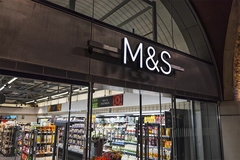
- Industry news
Industry news
- Category news
Category news
- Reports
- Key trends
- Multimedia
- Journal
- Events
- Suppliers
- Home
- Industry news
Industry news
- Category news
Category news
- Reports
- Key trends
- Multimedia
- Events
- Suppliers
KEY INTERVIEW: Inside Glanbia's Development of Gluten-Free Oats

09 Mar 2015 ---Glanbia Nutritionals cemented its position as a pioneer in nutritional and functional ingredients with last year’s launch of OatPure gluten-free oats. The company’s EMEA regional director, Carla Clissmann, talks to FoodIngredientsFirst to explain why this launch sets Glanbia apart from its competitors.
For starters, OatPure oats are grown under strictly controlled conditions and developed at the company’s new state-of-the-art food grade milling facility in Portlaoise, Ireland.
The high-tech facilities created to produce the gluten-free oats are impressive and costly, but this is just one of the elements which helps to make OatPure an exciting product, Clissmann explains.

“It’s more than gluten-free,” she says. “We plant the seed with our own farmers and each field is under GPS control,” she explains. “It’s a huge investment in time, money and effort to make sure the whole plant is gluten-free. And then it is harvested with our own bespoke machinery to ensure there is no risk of cross-contamination. We manage cross-contamination very carefully.”
Glanbia clearly felt a big financial investment was necessary in order to ensure the oats could be classified as gluten-free. It’s clear also that the company identified increased demand for this ingredient in the future.
But what else did the company need to do in order to get this product off the ground?
Increased demand:
Within the company it becomes a mind-set, she explains, where it is more than just an end product which can be classified as gluten-free.
“When we look at some of the other products on the market there are those that don’t have the same levels of control as us,” she says.
The end result is that there has been a lot of enthusiasm about this product and lots of enquiries so far. “We are still working through those,” she notes. “It’s a small sector but rapidly developing and I think the view is that it is here to stay. “
A small minority of the population have been diagnosed with coeliac disease but people who live in these families are increasingly trying to adopt a gluten-free lifestyle, she explains.
“Eating a gluten-free diet is becoming more and more of a mainstream phenomenon.”
Ensuring products that sit on the supermarket shelves are totally gluten-free is not a simple task, and because the demand for these products is increasing, the processes are being tightened up.
With Oat Pure, Glanbia is keen to stay ahead of the game, but the company is aware that all businesses are slowly feeling the need to assess their whole supply chain.
“We have recognised that oats must be grown as part of a programme to ensure that we manage the cross-contamination risk,” she explains.
Looking ahead:
Current labeling guidelines state that only oats that test at 20ppm or under can be labeled as gluten-free to comply with the EU 828/2014 standard, which stipulates how oats must be specially produced, prepared and processed to avoid contamination by wheat and other gluten containing grains.
In contrast, the OatPure gluten-free oats from Glanbia are independently certified to max 10ppm gluten, which exceeds the industry standard by a long shot.
“It shows we are putting our foot out there and we are not just doing it, but we are doing it and then some more.”
Opportunities for OatPure:
Clissmann states that so far a broad range of applications are interested in OatPure “from breakfast cereals to smoothies and also baked produce,” she notes. “It’s a bit of everything going forward. A significant part of our market is people already using oats, so for products such as granola bars, snacks, beverages – these are all part of the growth potential.”
Over time the company will be looking at ways of broadening this out into areas people haven’t thought of for gluten-free products, she says.
“And we will also be looking at ways of using oats in combination with other gluten-free grains. For example we have a gluten-free egg replacement product, using flax and a dairy protein element.”
In this way, combining OatPure into ways of creating a system is something Glanbia expects to be doing more of, she explains.
“And this is also because we recognise that the market will not grow until the finished product is really tasty, so it’s not just about flagging up the fact it is gluten-free.”
Global trends:
The market for gluten-free foods across the world is growing, and innovation – which is helping the products’ quality – is helping to encourage more people to buy into this.
“The UK is at the front end and as a nation it is very vocal but also on the continent there is more and more interest in gluten-free, and it is a growth segment there too,” she says. “There are very high growth rates in the US, but it’s a small proportion of the overall market.”
She notes though that this interest is all coming at a time where many countries, especially the US, are very interested in simplicity and clean label goods, which is where OatPure fits in very well.
“Seeds and gluten-free oats all sit well within this,” she confirms. “Gluten-free oats fit within our broader family of ancient grains, and we are also commercialising flax and quinoa, so it does fit within that broader family.”
The future:
Clissmann is confident that the early investment into the supply chain in order to create OatPure, was a good move by the company, and while others may eventually follow suit, Glanbia has the advantage of catching the market early.
“The facilities have to be gluten-free but it is the growing programmes that need investment as well as the facilities,” she points out. “So it needs to be fully integrated with many stages of the supply chain. Hopefully then it will go to another gluten-free facility for the next part of its journey.”
She explains that the investment made by the company was substantial. “But it can’t really be achieved unless that investment is made with a strong commitment and we wanted to see that manifested in the gluten-free customer base in the UK.”
Glanbia wanted to be the first in Europe and maybe the first in the world to have this kind of supply chain, she states.
“We have a co-op of farmer members and growers as well as local agriculture shops and milk collecting areas so we were uniquely placed to do this, along with the support of our agronomists and gluten-free specialists.”
The company’s agronomists work with at least 20 Glanbia co-operative farmers to supervise the crop throughout the process, to ensure full seed traceability. The oats are examined throughout to minimise the risk of cross- contamination.
For the future though the company wants to become an expert of this specialist nutrition market, and it wants to develop its knowledge further before it stretches out into another area with gluten-free, perhaps across other products within its ancient grain family.
“One of the real challenges ahead is to ensure that gluten in a product isn’t replaced by something that renders it devoid of nutritional values,” she explains. “It could be seen as a nice product but one that ends up having no long-term future among the broader audience.”
Another challenge is scale, which she says will become increasingly important in the longer term. “To undertake a programme like ours is very expensive compared to standard oats. The input cost is less of a concern but there is a very different output cost. It will need to be bought on a larger scale to drive down the output costs.”
by Sonya Hook









